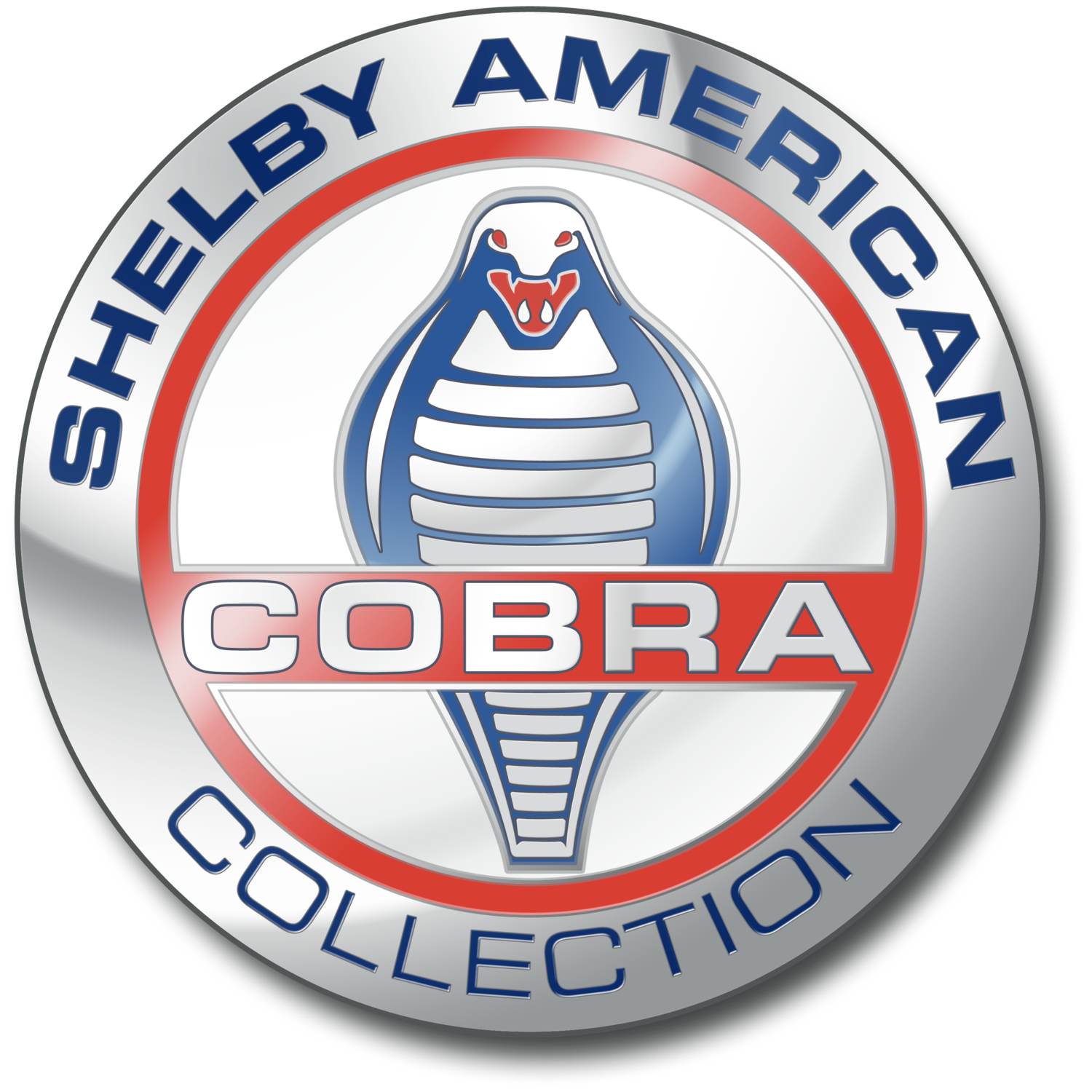1964 FIA Cobra Roadster CSX2345
The World Championship Roadster
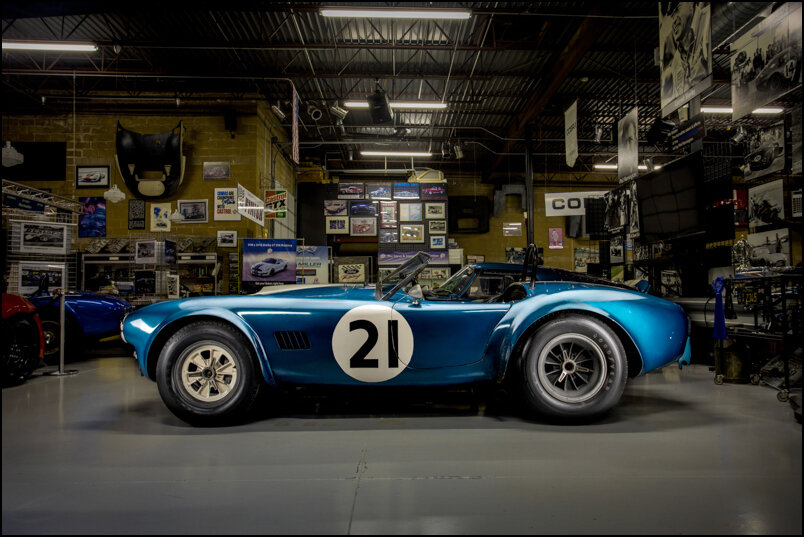

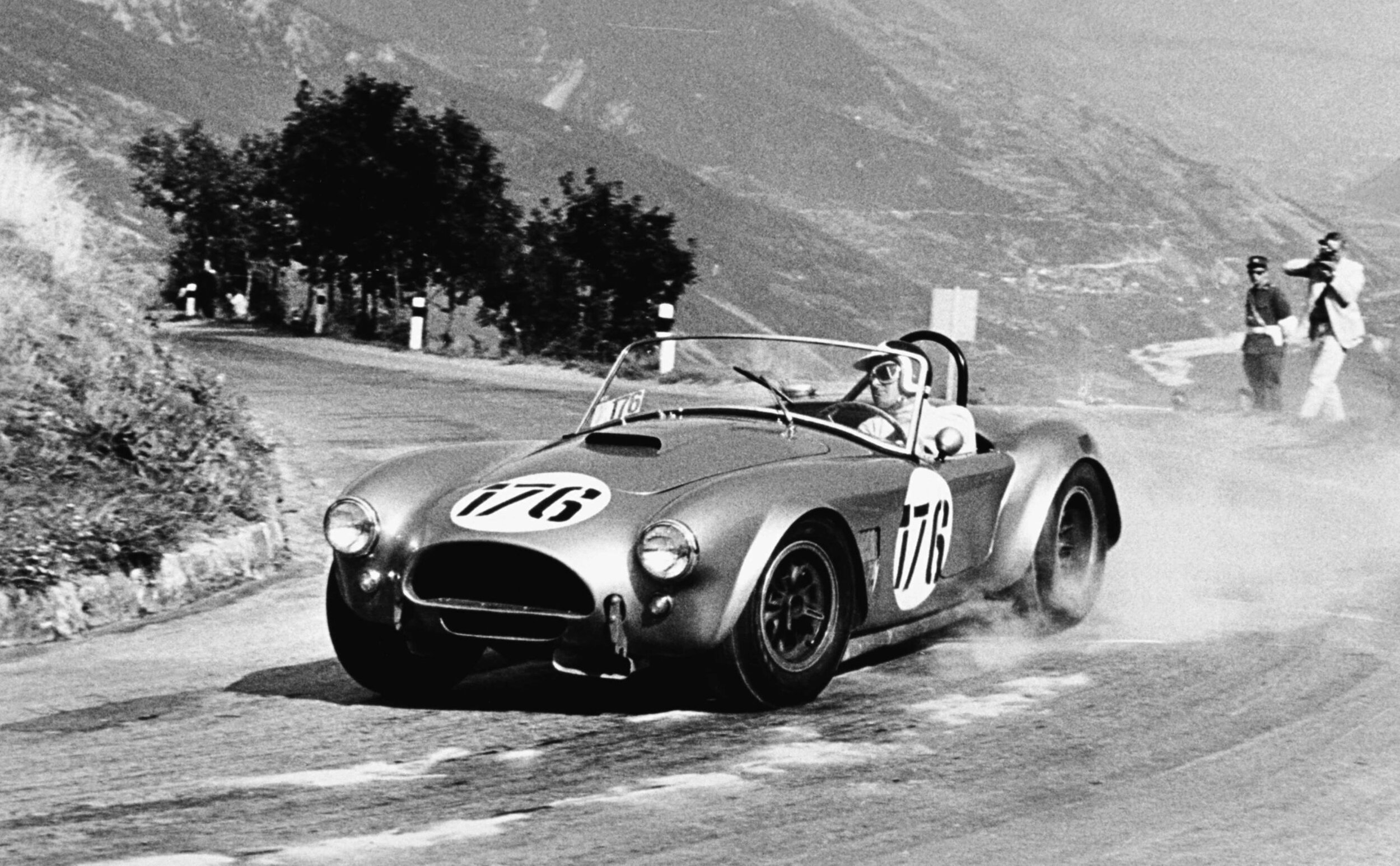
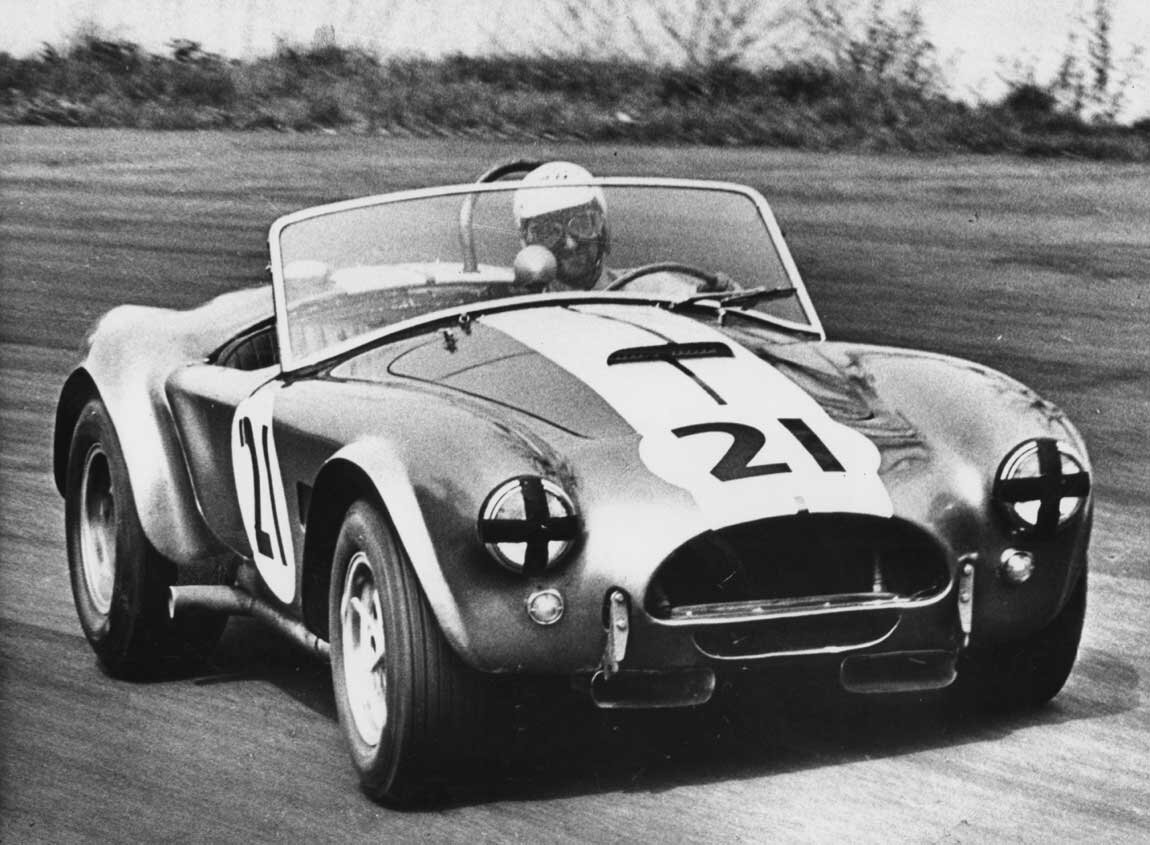
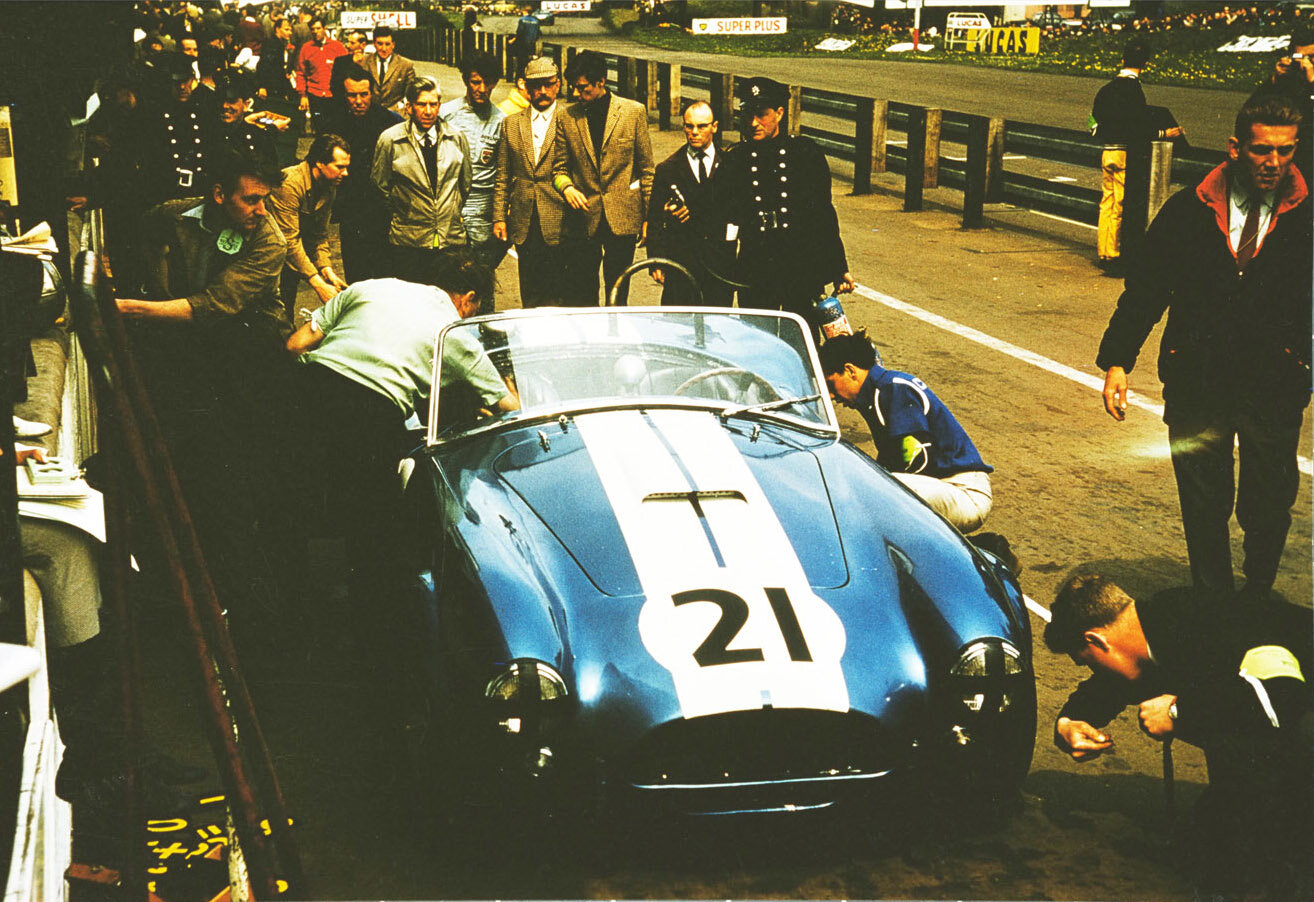
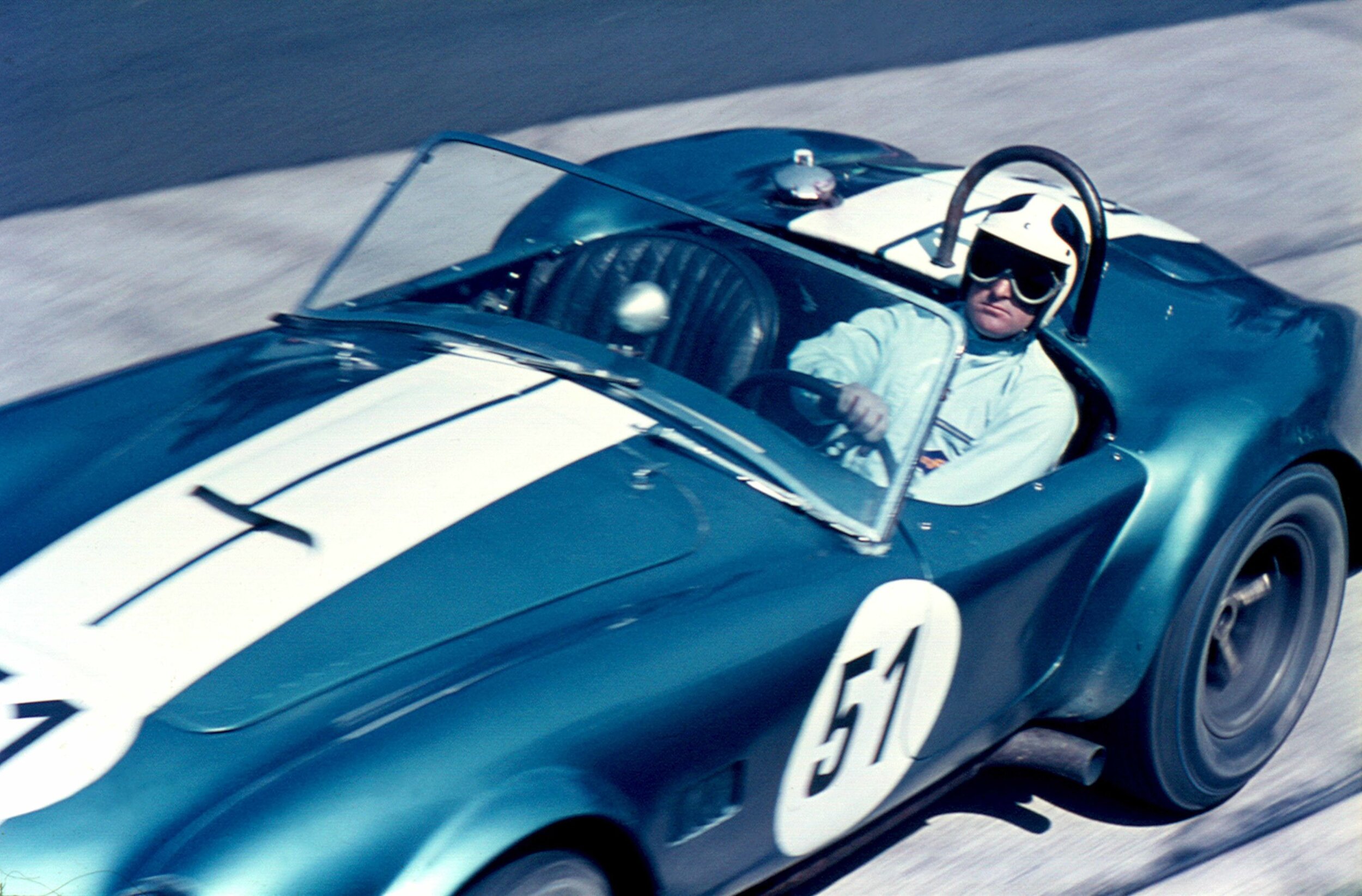
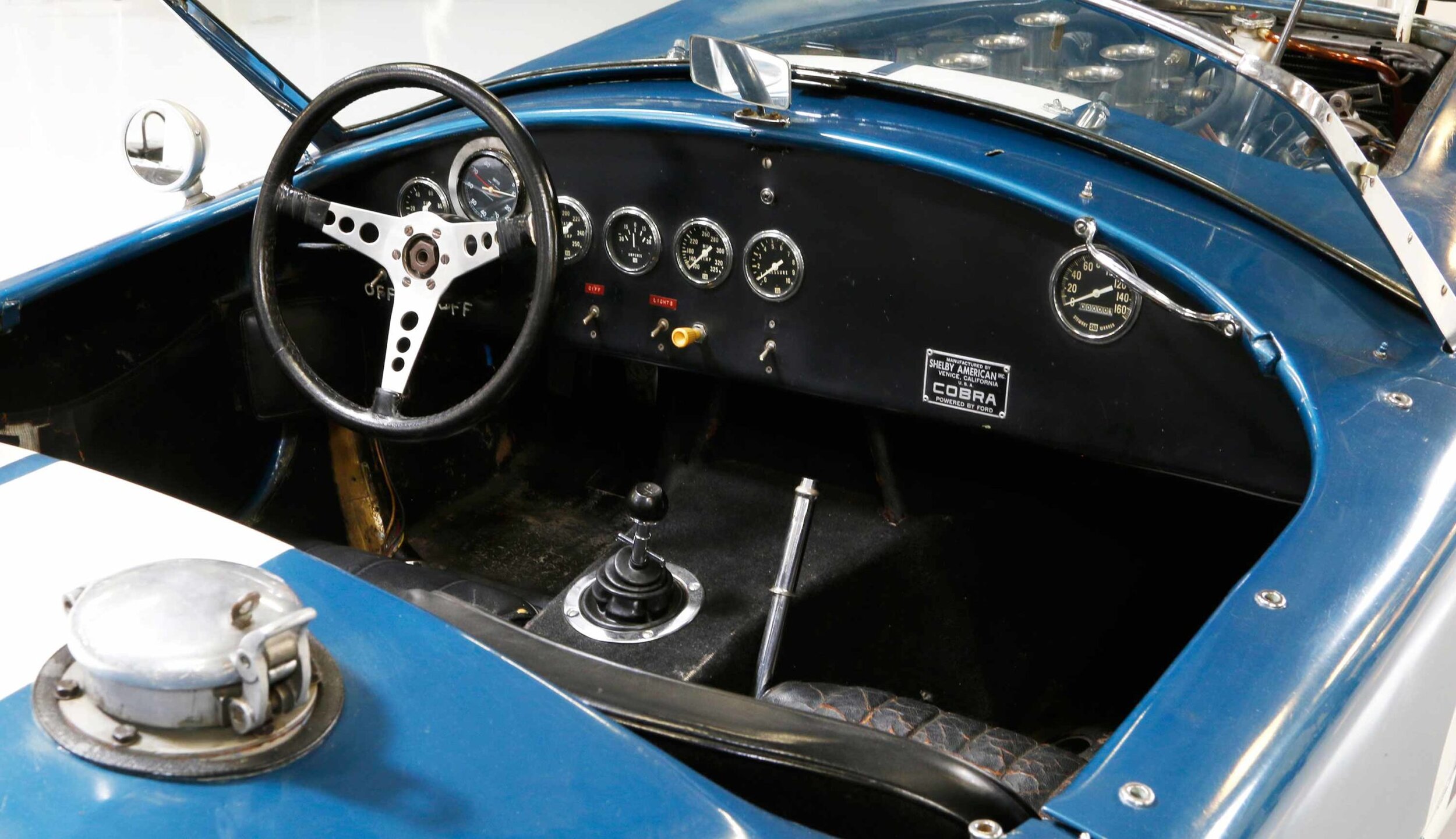
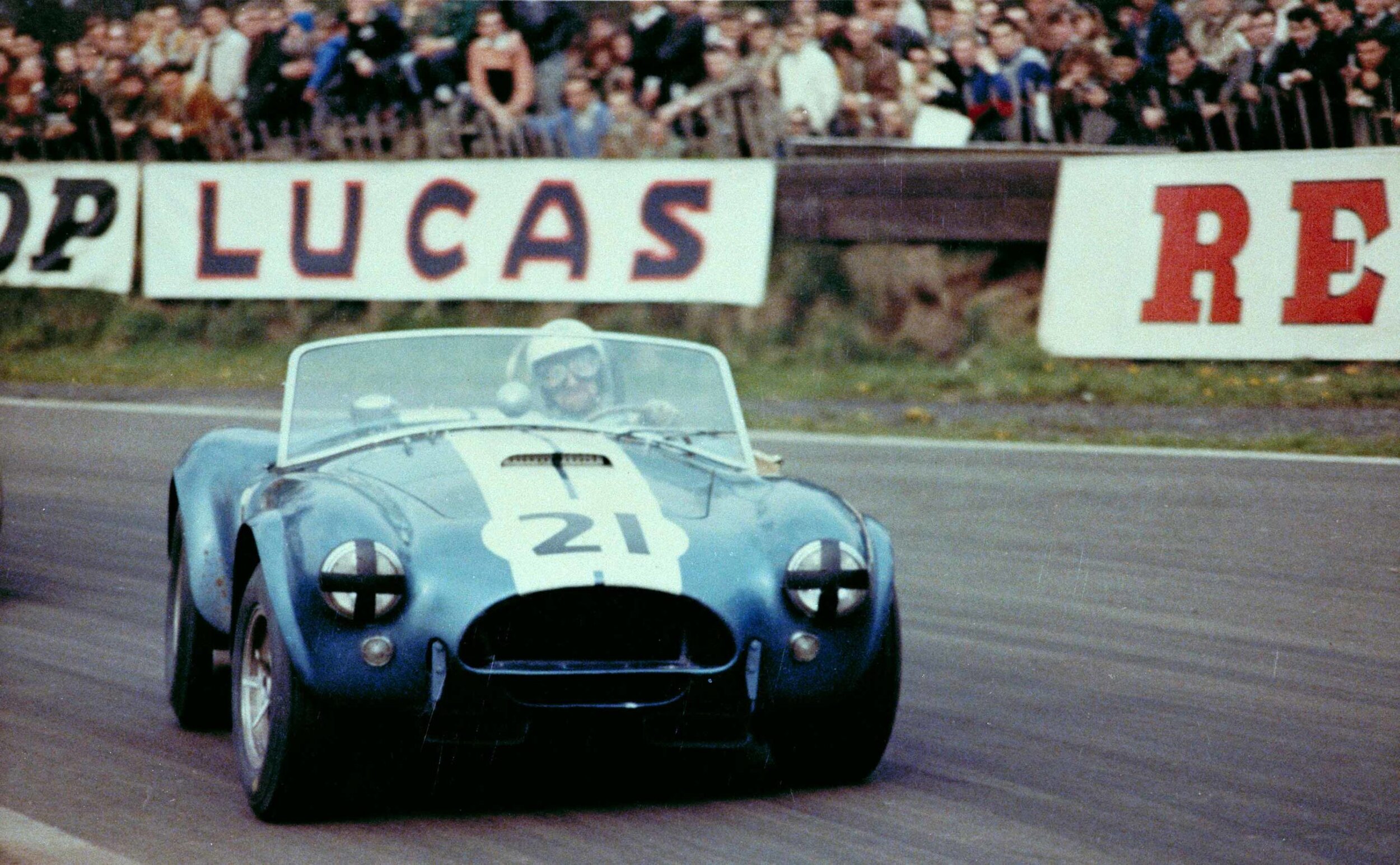
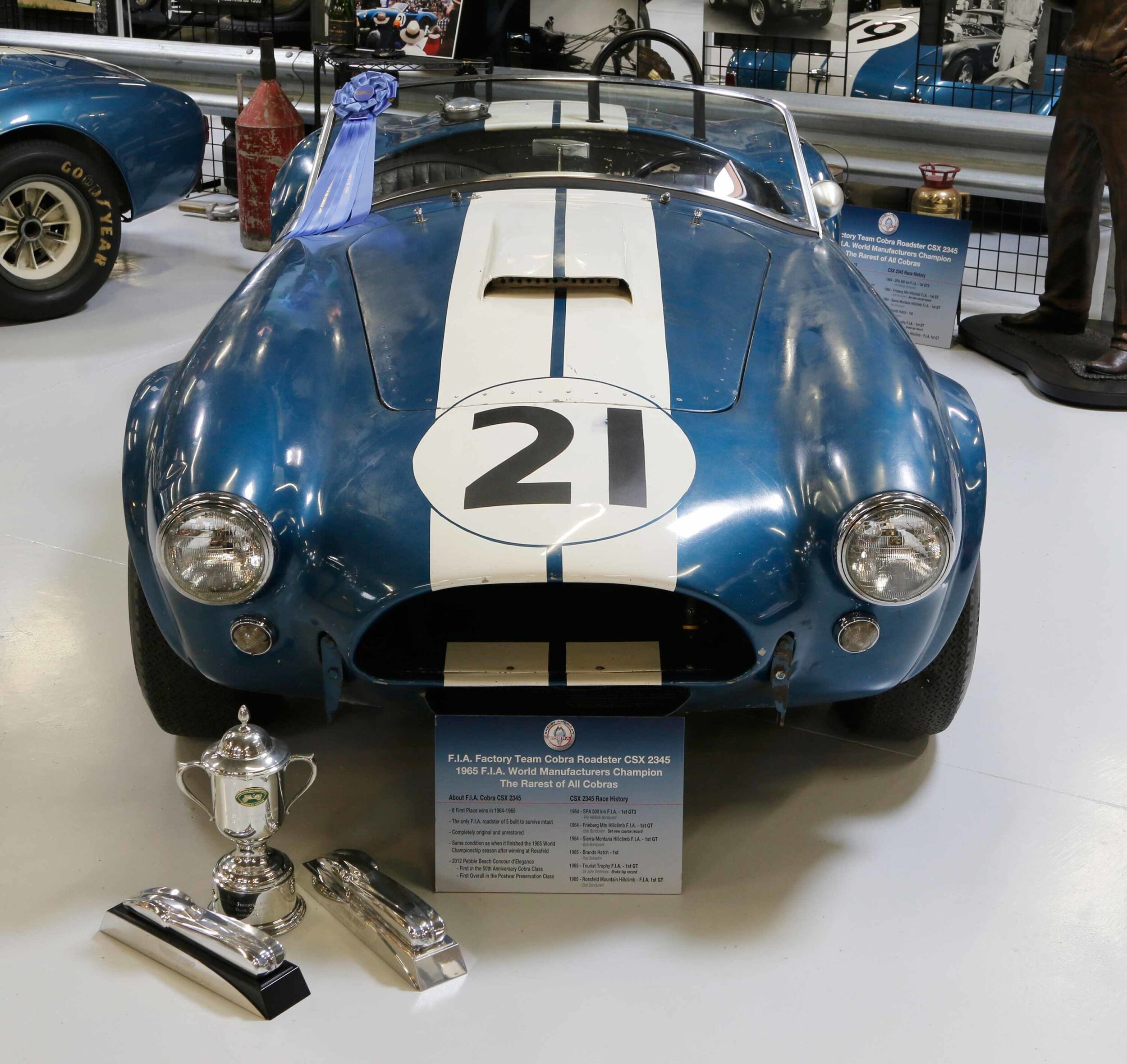
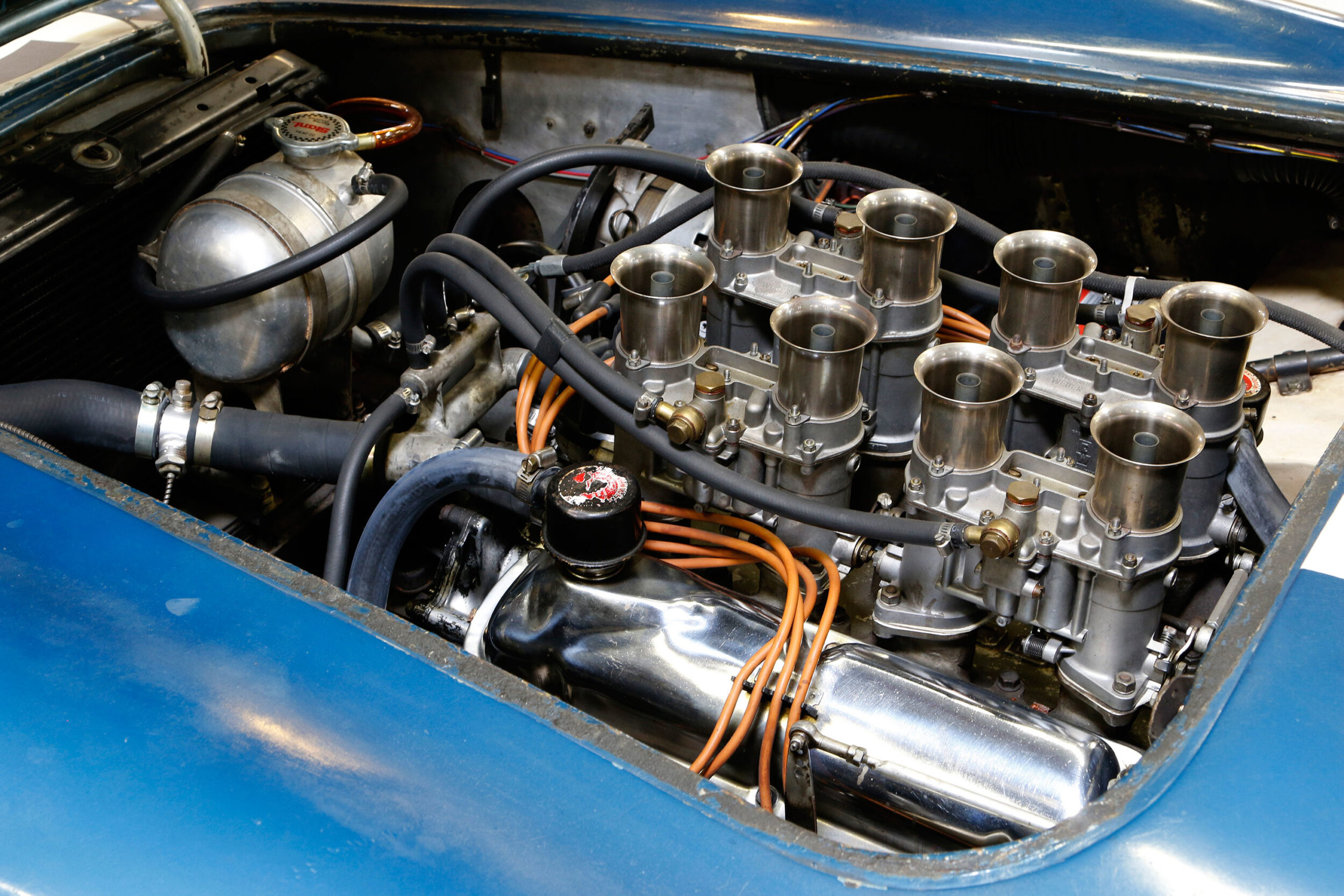
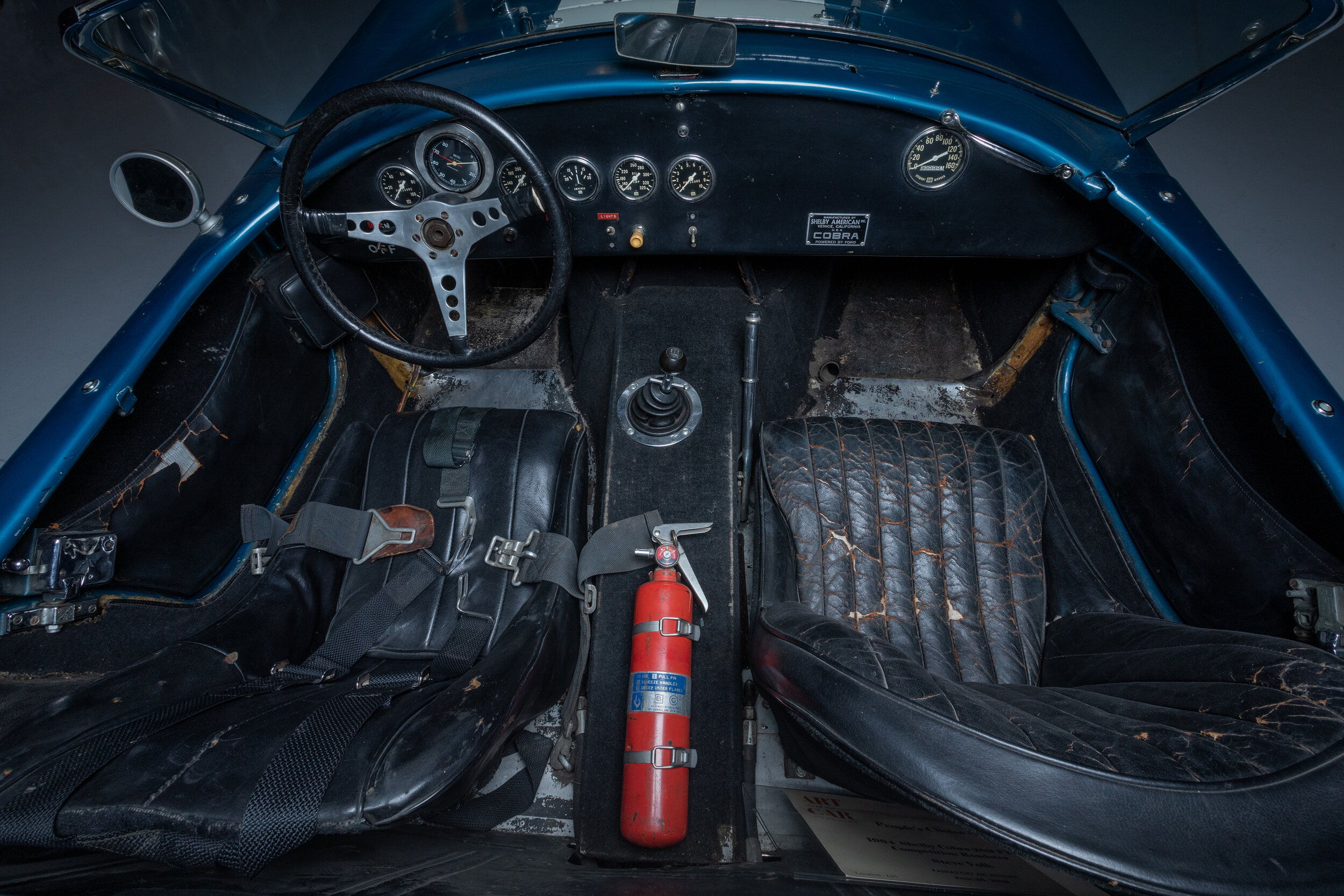
Details & History
Cracked paint? Dents? Scratches? It’s history, and it’s a priceless, proud and original world champion. One of the most desirable of all Cobras, CSX2345 was one of five 289 “FIA” roadsters. The museum’s most original competition car has survived unscathed for 50 years, just as it was when Bob Bondurant booted it up the hill at Rossfeld in southern Germany on June 13, 1965 for the GT win. Along with the six Cobra Daytona Coupes, these cars are credited with winning the World Manufacturers Championship in 1965, a “first” for an American car. CSX2345 was the last of the original five built, and remains one of only two left in existence today, and the only un-restored team car still in the same condition from its last race (and the museum intends to leave it that way). This car participated in every event the roadsters entered in the 1964 European FIA season, and won the Sierra Montana Hill Climb, and the Freiberg Hill Climb as well with Bob Bondurant at the wheel, setting a new course record. It was the only Team Shelby roadster entered in the world championship in 1965, and ended its FIA career with seven races and five wins – more than any other Cobra. CSX2345 won 1st in Class and the overall Post-war Preservation Class at the 2012 Pebble Beach Concours d’Elegance.
After his Cobras finished 1-2-3 at Sebring in 1964, Shelby decided to send his team to Europe to contest the FIA World Manufacturers Championship. By then the Cobra’s reliability had improved, though Shelby still understood that he was taking on the world’s best. His press release was carefully written: “We would be remiss if we didn’t at least try for the Championship. An American car has never won before. It would be presumptuous on our part to say that we will win, but we hope to make a good showing. It is only our second year of competition, and Ferrari has a great record, as well as more experience…”
Among CSX2345’s distinctive touches are its wider front fender flares, its cutback doors (their rear edges match the shape of the rear fender flares), the oil cooler scoop below the radiator air intake, and, last but not least, the subtle pyramidal protrusions in its trunk lid, created to allow the required FIA suitcase to fit inside. The car also has the “cheater” tilt-back windshield; designed to flop back at speed and reduce drag.
One thing this car lacks is the original diagonal brace for its roll bar, and Sir John Whitmore, “the racing baronet,” is responsible for that. Before the May 1965 race at Oulton Park which he won, he decided that the brace was in his way, so he asked the mechanics to cut it off. The brace was never replaced, and later drivers didn’t seem to care.
During 1964, CSX2345 carried the team’s usual color, Viking Blue, but for 1965, Shelby wanted something a little flashier, so the car was repainted in Guardsman Blue, slightly darker and more metallic. Some of the original blue survives on the underside of the hood, where the V8’s firing order was also scribbled in chalk by a sometimes forgetful team mechanic.
Shelby himself had raced in Europe in the 1950s, so he knew what to expect, but apart from Phil Remington and a few drivers, most of his crew members had little, if any, international experience. A good European partner could help. He chose Alan Mann Racing to enter, manage and maintain the cars.
As its driver on seven occasions, Bob Bondurant is most often associated with CSX2345. Having started as a Shelby American team driver in 1963, he first shared this car, in its first race, with Phil Hill in the 1964 Targa Florio. While the car was in fourth place, a failed bushing in the right rear suspension put it out after 9 of the 10 laps of the tough 45-mile Sicilian circuit.
Next came the 500 Km of Spa, on a smoother course in Belgium. Because of the spine-chilling speeds here, Phil Hill’s Daytona coupe was the only serious Cobra contender, setting the fastest lap at 135.64 mph, within just 2 mph of the contemporary Formula 1 lap record. When the Coupe failed due to “horsehair” clogging a fuel filter, which may have been sabotage, Ferrari took first through fourth places. Bondurant and this roadster finished best among Shelby’s team, 9th overall and first in class, followed by Jo Schlesser, 11th in another roadster.
For CSX2345, the Nurburgring 500 Km in May was a mess. Bondurant got hit on the first lap, and bent bodywork cut a rear tire, so he was forced to pit. Then he had to stop again to replace a broken shock absorber. When an engine-oil cooler line broke, he finally parked the car. Ferrari finished 1-2-4, and although the Schlesser/Attwood team Cobra won its class, it finished well back, 23rd overall.
On August 8th, in front of 60,000 spectators at Frieberg, drivers made two passes at the seven-mile hill climb. In CSX2345, car 66, Bondurant set a cumulative time of 14:02.750, a new record for the over-3.0-liter class. Beating Scarfiotti in a Ferrari GTO, he finished a surprising 4th overall against specially developed machinery driven by Europe’s best hill climbers. Jo Siffert, in another Cobra, was almost a minute back, in 20th.
Hill climbs must have suited Bondurant and CSX2345. Later in August, at the Sierra Montagna-Crans Hill Climb in the Swiss Alps, they repeated their fourth overall and first in class. That September and October, CSX2345 made an unlikely appearance at the First International British Drag Festival, a series of events at four ex-Royal Air Force stations. A contingent of American drag racers, including Don Garlits and Tommy Ivo, came over on the SS United States to stage exhibition runs at Blackbushe, Chelveston, Woodvale and Church Fenton. British drag racer and event organizer Dante Duce drove CSX2345 – casually classified in the program as a “stock sportscar” – to an ET of 11.95 seconds with a trap speed of 108 mph, but he later burned up the clutch in a cloud of smoke.
The car’s first race of 1965 came in March, in a non-FIA, two-heat support race for a Formula 1 event at Brands Hatch near London. Entered by Ford Advanced Vehicles and prepared by John Wyer, it was driven by Roy Salvadori, which paid off when CSX2345 won the GT category.
Two months later, Sir John Whitmore, whose success in Ford Cortinas may have led to this ride, drove the car in the FIA Tourist Trophy at Oulton Park, another two-heat affair. In the first of the two-hour contests, he raced in his usually exuberant style, smoking the rear tires in the corners so much that he had to pit for fresh ones, relegating him to a seventh place finish. In the second heat he drove less exuberantly, so he didn’t need to stop, coming in one spot higher. Even with a broken front anti-sway bar, Whitmore came fourth overall in the aggregate results, first among the big GT cars. Two other Shelby American Collection cars competed in the same race: CSX2999, the Daytona Coupe, driven by Jack Sears, finished 7th overall, while CSX2131, the Willment Coupe, driven by Frank Gardner, was 10th. By now the coupes not only held clear superiority in speed on fast tracks, but their reliability had also improved, so for the 500 Km of Spa and the 1000 Km of the Nurburgring, CSX2345 served as a practice car for Bondurant and Sears.
Which brings us to its final event. The Rossfeld Hill Climb took place among the fantastic mountains in far southeast Germany, near Berchtesgaden, within 200 miles of Stuttgart, headquarters of the expert Porsche team. The 4.0-liter Cobra had more torque than the German 2.0-liters, but its nimbleness and drivers’ experience were no match for the Porsches, which took the first three places. Nevertheless, the Cobras weren’t in it to win just the battle. They were there to win the war, the World Manufacturer’s Championship. Bondurant finished 10th overall and won the GT class in CSX2345.
After Rossfeld, CSX2345 was shipped back to the team shop in Torrance and stored until March 1966, when it was sold to Greg Bayne, of nearby Burbank. Unlike other buyers of ex-team cars, Bayne didn’t modify, race, or even drive his car on the street; instead, he stored it, unaltered, for eight years. Mike Shoen, author of The Cobra-Ferrari Wars, became the car’s next curator. After he had cleaned the car and tuned up the engine – the same one that powered it up the hill that day at Rossfeld – CSX2345 joined the Collection.
CSX2345 raced in more FIA events, seven, and won its class more times – five 1st place wins – than any other Cobra roadster. The only Cobra to endure both the 1964 and 1965 race seasons in Europe driven by Bob Bondurant, Phil Hill, Sir John Whitmore, Roy Salvadori, Jack Sears and Jochen Neerpasch, it formed a vital part of the Shelby American team that won the 1965 Manufacturer’s World Championship, the first such crown for an American-powered chassis.
Text excerpted from “Shelby Cars in Detail, Cars of the Shelby American Collection” by Frank Barrett with photography by Boyd Jaynes.
Images by Dave Friedman, David Schlatter and the Shelby American Collection.
Race History
1964 Race Season
Track: Targa Floria FIA
Place: DNF
Driver: Phil Hill/Bob Bondurant
Track: SPA 500 KM FIA
Place: 9th GT, 1st GTIII, 9th OA
Driver: Bob Bondurant
Track: Nurburgring 1000 KM FIA
Place: DNF
Driver: Bob Bondurant/Jochen Neerpasch
Track: Frieberg Mountain Hillclimb FIA
Place: 1st GT, 4th OA, Set a New Course Record
Driver: Bob Bondurant
Track: Sierra Montana Crans FIA
Place: 1st GT, 5th OA
Driver: Bob Bondurant
1965 Race Season
Track: Brands Hatch Monday (non FIA)
Place: 1st Place, FAV John Wyer prepared
Driver: Roy Salvadori
Track: Tourist Trophy FIA, Oulton Park, England
Place: 1st GT, 4th OA (Broke Lap Record)
Driver: Sir John Whitmore
Track: SPA 500 KM FIA
Place: Practice Car driven by Bob Bondurant and Jack Sears, Did Not Race
Track: Nurburgring 1000 KM FIA
Place: Practice Car driven by Bob Bondurant and Jack Sears, Did Not Race
Track: Rossfeld Mountain Hillclimb FIA
Place: 1st GT, 7th OA
Driver: Bob Bondurant
